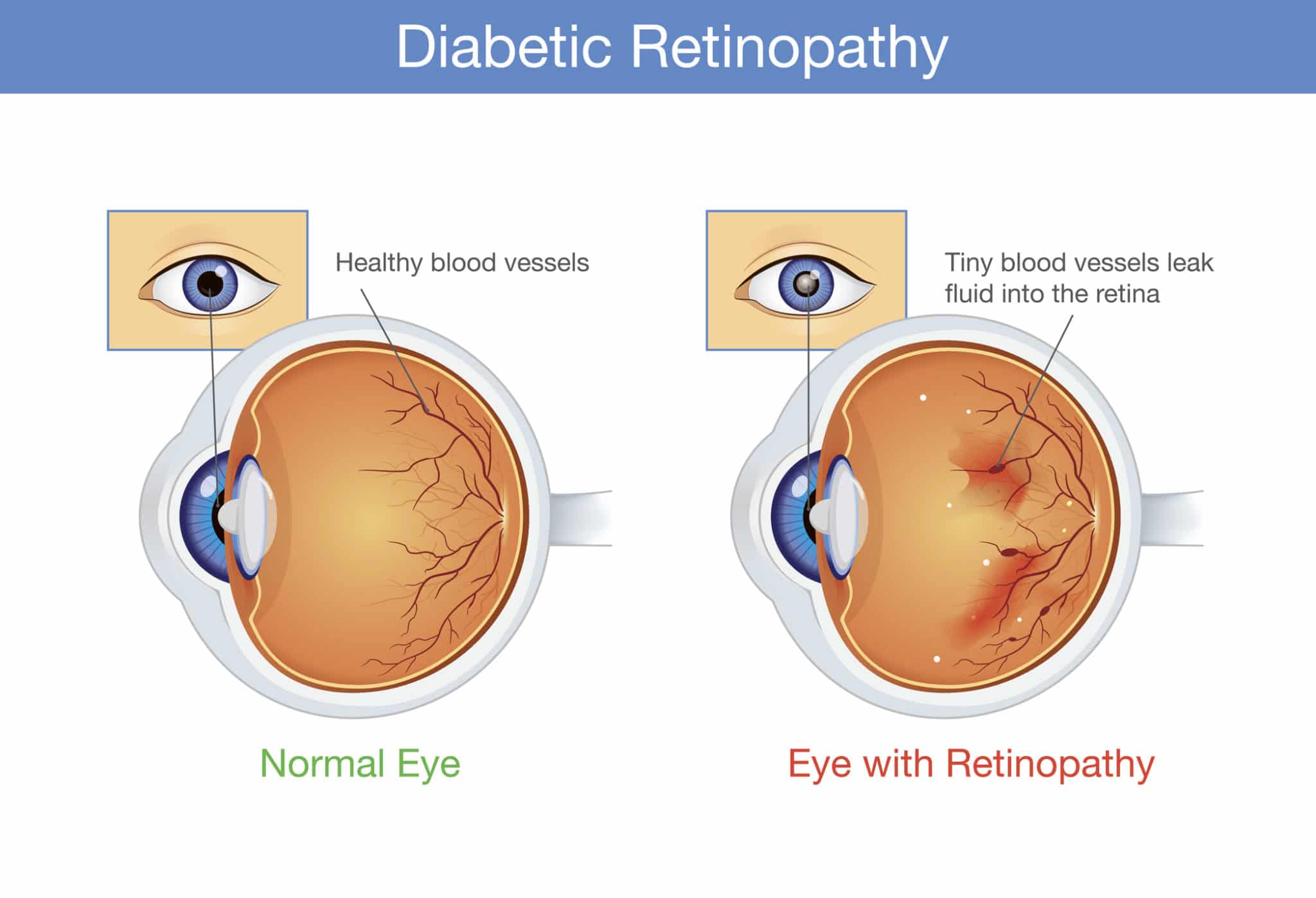There are several different types of diabetic eye disease. Some develop early, while others do not manifest symptoms until the later stages. These symptoms include difficulty discerning light shades, floating dark spots, or lines in vision. The type of diabetes that causes these symptoms may be genetic, or it may be related to the patient's family history. However, any type of diabetes is at a greater risk of resulting in diabetic eye disease.
The two main types of diabetic eye disease are retinopathy and glaucoma. These are different types of eye disease that all cause damage to the retina and the macula. If left untreated, these conditions can result in blindness, which is why treatment is so important. The best way to treat diabetic eye disease is prevention, but if you already have it, you should see your doctor as soon as possible.
Both of these conditions cause vision loss and damage to the optic nerve. Diabetics have an increased risk of developing both types of diabetic eye diseases. Glaucoma is the most common type of diabetic eye disease, affecting 34.2 million people in the U.S. alone, which is ten percent of the population. If left untreated, this condition can progress to other types of blindness, including glaucoma.
There are two types of diabetic eye disease. The first type is proliferative. In this form, damaged blood vessels close and new, abnormal blood vessels grow in the retina. These blood vessels can then leak fluid and eventually rupture, causing blurred vision. Ultimately, both types are serious. If left untreated, these complications can lead to blindness. This article will discuss these types of diabetic eye diseases and explain what they are.
Another type of diabetic eye disease is called retinopathy. This affects the retina, the light-sensitive part of the eye. The condition is characterized by damage to blood vessels that leak, grow, or die. A patient with poorly controlled diabetes is at higher risk of developing retinopathy. The site accordclub.in.th explains that it is important to understand that a person with diabetic eye disease will need to undergo a cataract procedure. This procedure replaces the natural lens of the retina with an artificial one.

There are three different types of diabetic eye disease. The first is diabetic retinopathy, which is the most common cause of blindness in working-age adults. This type of diabetes damages the blood vessels in the retina, leading to blurred vision and loss of vision. The second is a condition known as glaucoma, which is caused by pressure in the eye. This condition can damage the main optic nerve. It can be treated with eye drops or surgery.
There are two other types of diabetic eye disease. The first type, proliferative retinopathy, is the most serious and can lead to blindness. In this type, damaged blood vessels in the retina close and new ones grow in their place. This causes blood to enter the retina, causing the eye to become cloudy. This condition is a serious health problem for people with diabetes.
A diabetic retinopathy can lead to vision loss or even blindness. Fortunately, these types of eye disease are not life-threatening. Proper blood glucose management can prevent and cure many of these types of diabetic eye disease. Keeping a healthy blood sugar level is a key step toward preventing the onset of these eye diseases. When detected early, they can be treated with new glasses, magnifying lenses, and anti-glare sunglasses.
While most diabetic eye disease types are treatable, if left untreated, they can lead to vision loss. Thankfully, there are many treatments available to prevent blindness and preserve sight. A comprehensive exam with a doctor will help detect any problems early. In addition to treating diabetes, there are many other types of eye diseases that are related to diabetes. By taking control of blood sugar levels, you can prevent a retinopathy.
There are several different types of diabetic eye disease. Open-angle glaucoma is the most common, followed by neovascular glaucoma. These are the most common types of glaucoma and are also the most dangerous. In order to avoid these complications, you should have a regular eye exam. You should schedule a full-fledged examination for your eyes. It is important to have a comprehensive evaluation if you have any concerns about your health.
